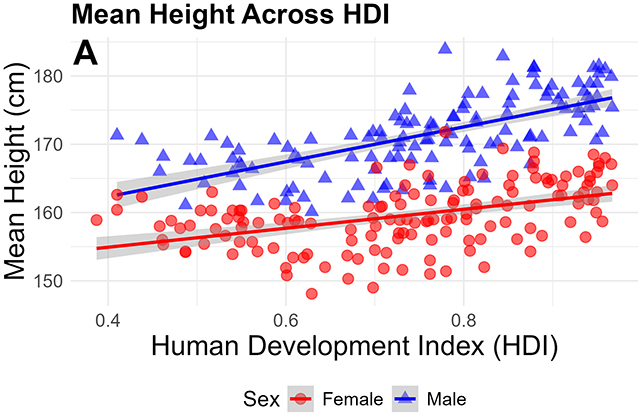An analysis of a selection of different data sets representing changes in men's heights and weights reveals that as countries get richer and more healthy, the men in those countries get taller and heavier – and at twice the rate of women.
The international team of researchers behind the recent study looked at data on 135,645 people (46 percent of whom were male), across 62 countries, collected in 2003. This was augmented by stats from Wikipedia and historical UK data going back to 1900. To help clarify the findings, people classified as obese were omitted from the study.
The sexual size dimorphism – different physical traits between the sexes, with men being taller and bigger than women – was clear, as was the link between increasing prosperity and height and weight.

"Our cross-national analyses suggest that as the social and ecological conditions of nations improve, including reductions in overall disease burden, people's height and weight increase, but more than twice as much in men as in women resulting in greater sexual size dimorphism," the researchers write.
The results support previous findings that heterosexual women generally like their men taller and heavier, more than heterosexual men preferring mates to be smaller and slimmer. They also reinforce links between the wealth and health of a country as measured by the Human Development Index (HDI) and being taller and heavier, most likely as a result of the effect living environment and quality of life has on our bodies.
That this effect is significantly more noticeable in men suggests male bodies may be more sensitive to living conditions, perhaps because bigger bodies need more upkeep and maintenance. For women, the environment seems to have less impact on their morphology.
"Based on our main finding of sexual size dimorphism being greater in more favorable environments, it is clear that the development and maintenance of gross morphology is more sensitive to living conditions in men than in women, at least in terms of height and weight," write the researchers.
There was also some interesting variability between countries. Weight ranges were greater in countries with higher HDIs for example, while height variation among men declined as their national HDI increased.
Taken all together, the researchers suggest their results show male height could be a useful indicator of the overall health and well-being of a population, providing authorities with a relatively easy measure.
That said, the researchers also acknowledge that longer-term studies, tracking the same people more comprehensively over time and in different countries, will be needed to back up the patterns shown here.
"Our study combines evolutionary biology with measures of human well-being, providing novel insights into how socio-ecological factors and sexual selection shape key physical traits," write the researchers.
The research has been published in Biology Letters.
